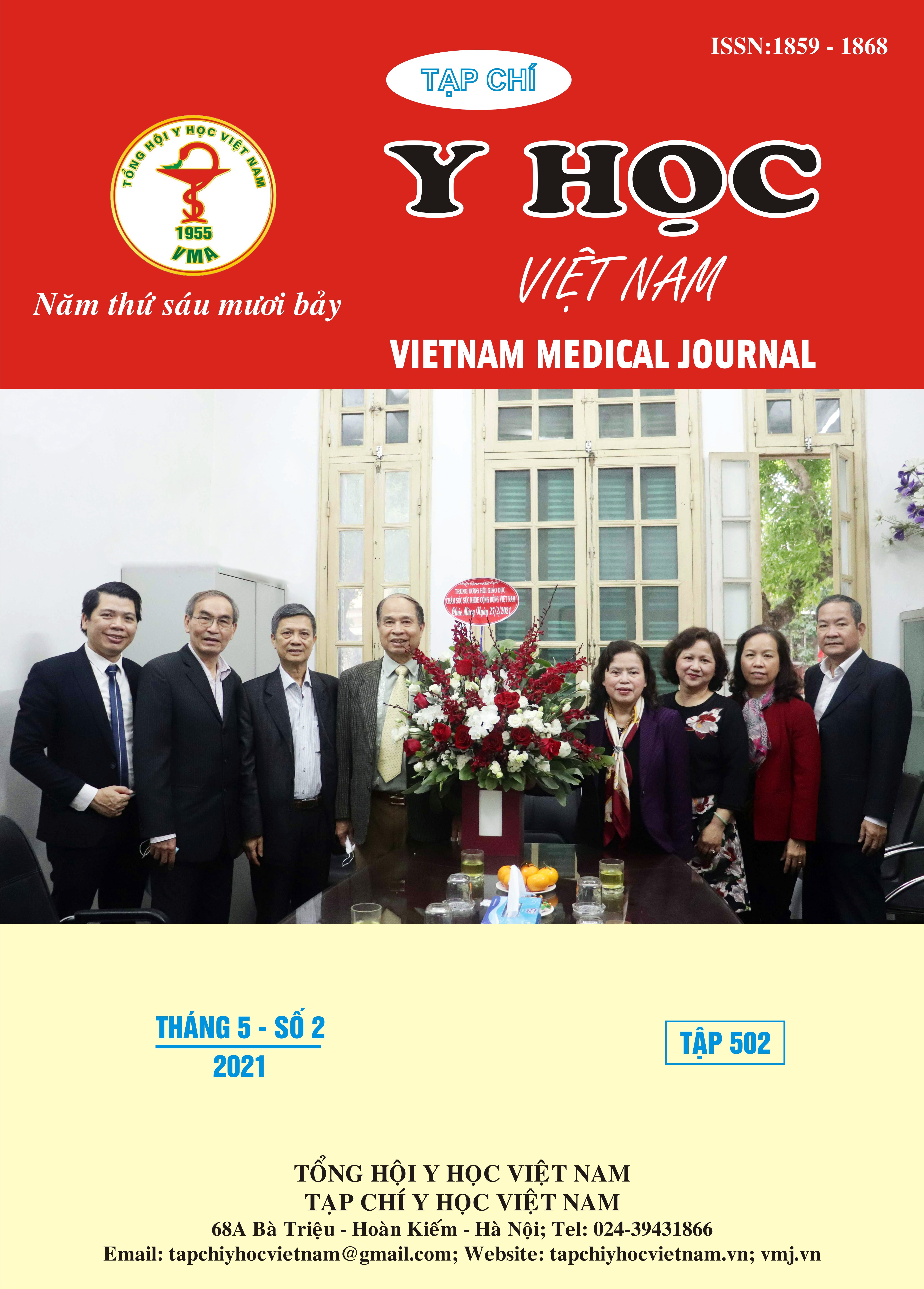ĐÁNH GIÁ ẢNH HƯỞNG TRÊN TUẦN HOÀN, HÔ HẤP VÀ TÁC DỤNG KHÔNG MONG MUỐN CỦA PHƯƠNG PHÁP GIẢM ĐAU ĐƯỜNG NGOÀI MÀNG CỨNG NGỰC DO BỆNH NHÂN TỰ ĐIỀU KHIỂN BẰNG ROPIVACAIN KẾT HỢP VỚI FENTANYL SAU MỔ MỞ VÙNG BỤNG
Nội dung chính của bài viết
Tóm tắt
Mục tiêu: Đánh giá ảnh hưởng trên tuần hoàn, hô hấp và tác dụng không mong muốn của phương pháp giảm đau ngoài màng cứng ngực do bệnh nhân tự điều khiển bằng ropivacain kết hợp với fentanyl sau mổ mở vùng bụng. Phương pháp nghiên cứu: Thử nghiệm lâm sàng ngẫu nhiên có so sánh trên 03 nhóm, mỗi nhóm bao gồm 35 bệnh nhân được chỉ định phẫu thuật ổ bụng mở. Hỗn hợp thuốc sử dụng giảm đau sau mổ là fentanyl 2mcg/ml kết hợp lần lượt với ropivacaine 0,1% ở nhóm I, ropivacaine 0,125% ở nhóm II và ropivacaine 0,2% ở nhóm III. Đánh giá ảnh hưởng trên tuần hoàn, hô hấp và các tác dụng không mong muốn xuất hiện ở người bệnh trong quá trình làm giảm đau. Kết quả: Tần số tim của người bệnh giảm rõ rệt trong 15 phút đầu sau mổ ở cả 3 nhóm, và duy trì ổn định từ thời điểm 30ph trở đi. Trung bình tần số thở của các bệnh nhân trong nghiên cứu giảm từ 18,3 ± 14 xuống 16,3 ± 0,9 (lần/phút). Không có người bệnh nào gặp tình trạng SpO2 dưới 95%. Thời gian trung tiện trung bình của người bệnh dưới 40 giờ và thời gian ngồi dậy trung bình dưới 20 giờ ở cả 3 nhóm. Các tác dụng không mong muốn gặp phải là nôn, buồn nôn và đau đầu với tỷ lệ thấp <5%. Không có trường hợp nào bị tụt catheter, tụt huyết áp, ngứa hoặc run. Kết luận: Các chỉ số tuần hoàn, hô hấp của người bệnh ổn định trong giới hạn bình thường, các tác dụng không mong muốn gặp với tỷ lệ thấp ở cả 3 nhóm.
Chi tiết bài viết
Từ khóa
ropivacain, fentanyl, giảm đau ngoài màng cứng ngực, phẫu thuật ổ bụng mở
Tài liệu tham khảo
2. Trần Đức Thọ (2017), Nghiên cứu tác dụng giảm đau sau mổ bụng trên của Levobupivacain phối hợp với Sufentanil hoặc Fentanyl hoặc Clonidin qua catheter ngoài màng cứng bệnh nhân tự điều khiên, Luận án Tiến sĩ Y học, Viện nghiên cứu Khoa học Y Dược Lâm sàng 108.
3. Clemente A., Carli F. (2008), "The physiological effects of thoracic epidural anesthesia and analgesia on the cardiovascular, respiratory and gastrointestinal systems", Minerva Anestesiol. 74(10), p. 549-63.
4. Hansdottir V., et al (2006), "Thoracic epidural versus intravenous patient-controlled analgesia after cardiac surgery: a randomized controlled trial on length of hospital stay and patient-perceived quality of recovery", Anesthesiology. 104(1), p. 142-51.
5. Jain Rashmi, Gupta Pushpalata, Jain Vinita (2016), "A comparison of ropivacaine with fentanyl to bupivacaine with fentanyl for post-operative patient controlled epidural analgesia in patients undergone lower abdominal cancer surgery", J IAIM. 3(7), p. 137-149.
6. Patil Shruti Shrikant, Kudalkar Amala G., Tendolkar Bharati A. (2018), "Comparison of continuous epidural infusion of 0.125% ropivacaine with 1 μg/ml fentanyl versus 0.125% bupivacaine with 1 μg/ml fentanyl for postoperative analgesia in major abdominal surgery", Journal of anaesthesiology, clinical pharmacology. 34(1), p. 29-34.
7. Scott N. B., et al (1996), "Continuous thoracic epidural analgesia versus combined spinal/thoracic epidural analgesia on pain, pulmonary function and the metabolic response following colonic resection". 40(6), p. 691-696.
8. Yvan Pouzeratte., Jean M. Delay., Georges Brunat. (2001), "Patient-Controlled Epidural Analgesia After Abdominal Surgery: Ropivacaine Versus Bupivacaine", Anesth Analg. 93, p. 1587-1592.
9. Zafar N., et al (2010), "The evolution of analgesia in an 'accelerated' recovery programme for resectional laparoscopic colorectal surgery with anastomosis", Colorectal Dis. 12(2), p. 119-24.


